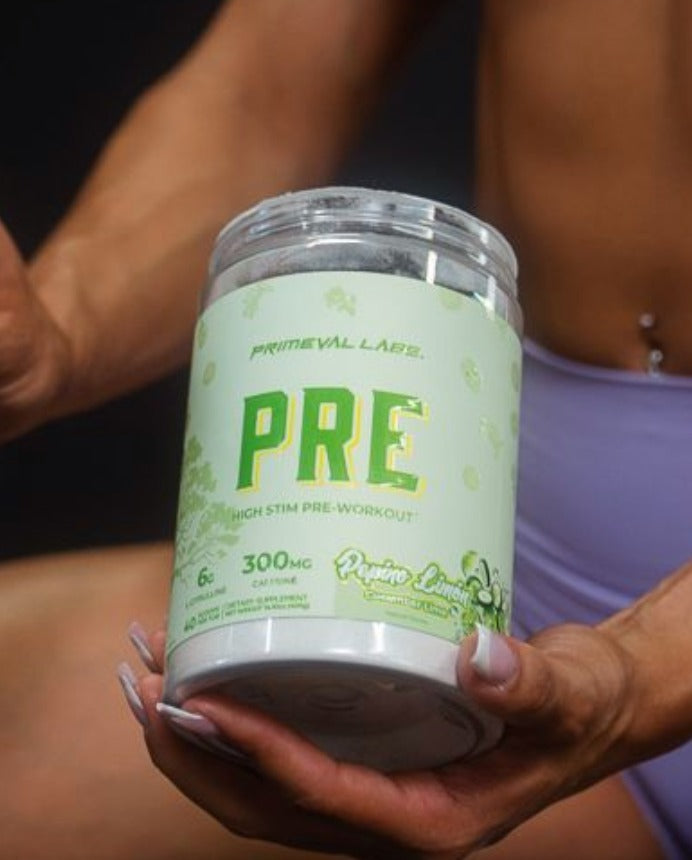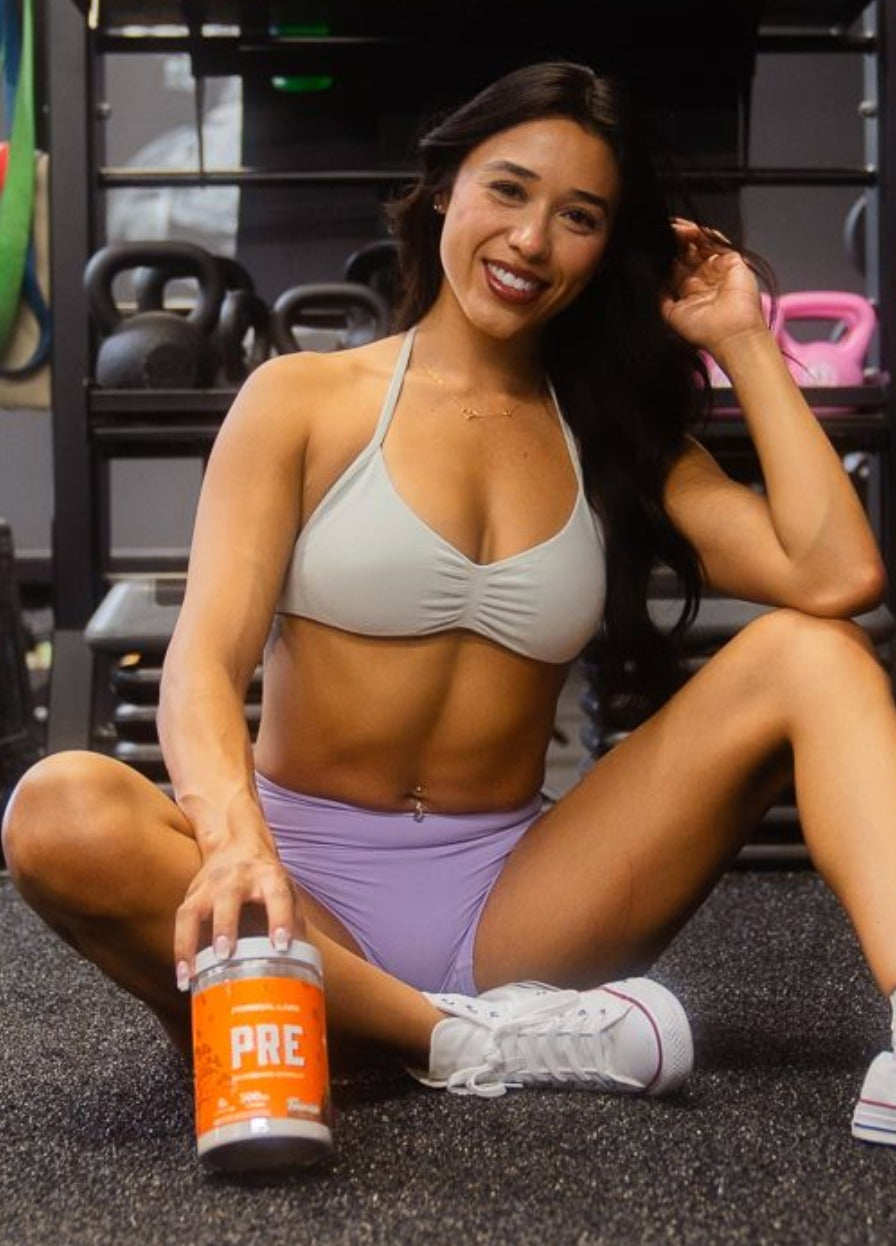The barbell bent-over back row is one of the all-time muscle and strength-building exercises. There’s a reason for the saying “if you want to grow you gotta row."
While the barbell bent-over row has helped build the backs of many great athletes. For a significant portion of the gym-going crowd, the exercise isn’t a great fit, due to any number of reasons, including low back pain and lack of a mind-muscle connection. Others reduce the effects of the bent-over row and do a lot of body English, flailing, kipping, etc, which negates many of the back-growing benefits of the exercise.
Still, others are intimidated by barbell movements and need effective compound exercises to grow their back.
Using these five back row variations will give you bigger, stronger, and broader back!
Boost Performance
Mega Pre Red is a delicious-tasting, high-energy designed to support greater focus, motivation, and athletic performance.
Learn More

Top 5 Back Row Variations
Meadows Row
Named after the “Mountain Dog”, John Meadows, the Meadows Row exercise is a unilateral back row variation that uses a landmine setup. It’s great for hitting the muscles of the upper back.
The story goes that Meadows struggled to get any substantial back growth from conventional barbell rows, so he sought to perform the row in such a way that he created a robust mind-muscle connection with his upper back.
To perform the Meadows Row alternative:
- Place one end of a barbell in a landmine attachment or in the corner of the gym if you don’t have a landmine setup.
-
Load up the appropriate amount of weight (up to and including 25-pound plates).
Keeping your plate selection to 25s and below allows you to use a larger range of motion that would otherwise be reduced with 45-pound plates or larger. 25-pound plates have a smaller diameter and will require you to move your back muscles through a greater range of motion, promoting greater hypertrophy. - Take a staggered stance such that your left leg is in front, your right leg behind, and your chest facing down to the floor.
- Grab the end of the bar with your right hand and place your left hand on your left knee for stability.
- Drive your right elbow up as high as you can without rotating your spine and squeeze at the top.
- Lower the bar under control and repeat for the desired number of reps.
Chest-Supported Incline Row
For those that experience pain in the low back when performing barbell rows, or those that are a bit weary of the possibility of hurting their low back, the chest-supported incline dumbbell row is an ideal option.
Plus, for those who notoriously cheat on bent-over rows, the prone position of this exercise eliminates the possibility of cheating, meaning it’s all about the back, baby.
To perform the exercise:
- Grab a pair of dumbbells and lie facedown on an incline bench with your feet on the floor.
- Begin with your arms fully extended, palms facing each other.
- Contract your back muscles to drive your elbows back towards your hips.
- When the dumbbells reach the sides of your torso, squeeze your shoulder blades together for a count of one, then slowly lower the weight to the starting position.
1-Arm Dumbbell Row
If there’s one row variation that could give the barbell row a run for its money as king of rows, it just might be the 1-arm dumbbell row.
Similar to the Meadows Row, the 1-arm dumbbell row lets you hammer one side of your back at a time, allowing you focus all of your energy, effort, and focus on giving it all you’ve got.
Most of us are familiar with the 1-arm dumbbell row, but for those that need a refresher…
- Put your left knee and left hand on a flat bench. Place your right leg on the floor, providing you a stable base for the exercise.
- Grab a heavy dumbbell off the floor.
- Contract the lats to drive your elbow back towards your hip.
- Pause at the top position for a second and slowly lower the dumbbell under control to the ground.
- Allow your shoulder to protract at the bottom as this increases the range of motion you go through for each rep, which means more gains!
Single Arm High-Cable Row
One less conventional row that should become more common in your training is the single-arm high cable row.
The benefit of performing back rows with cables is that they provide constant tension on the muscles of the back throughout the entire range of motion. Free weight rows suffer from an uneven distribution of training stress where they are relatively easy at the bottom and obscenely difficult at the top.
Cables and machines allow for a more consistent tension on the muscles throughout the entire range of motion.
We also like the single-arm high cable row due to its unique angle of pulling (high to low) which is different from most other rows you likely perform in your workout.
Finally, the high cable row variation also allows you to get your elbow all the way back behind the body, into extension and adduction -- satisfying all the major functions of the lats.
To perform the single-arm high cable row:
- Attach a D-handle to the pulley at the top position of a cable column.
- Step back until you have tension on the cable with your arm extended.
- Assume a staggered stance with your left foot in front, right foot behind.
- Hold for a count and slowly return to the top, allowing the shoulder to protract at the top and creating a tremendous stretch on the lats.
- Repeat for desired number of reps.
Inverted Row
For those looking for a challenging bodyweight exercise to build their back that isn’t a pull-up or chin-up, the inverted row is a perfect fit.
As an added bonus, if you’re someone who presently struggles to perform a high number of pull-ups or chin-ups, the inverted row is a great exercise to help build muscle and strength in your back as well as get a feel for how to move your body through space.
To perform the inverted row:
- Set a barbell in a power rack at hip height. You can also use a smith machine for the exercise as well as TRX straps or rings, if you have access to those.
- Lie faceup underneath the bar and grasp it using a pronated shoulder-width grip.
- The legs should be fully extended in front of you with your heels together on the ground.
- Tighten your core and initiate the row by contracting the back muscles and driving the elbows back.
- Pull until your chest touches the bar.
If inverted rows are too difficult, you can make them easier by bending the knee and bringing your heels in. If inverted rows are too easy, try elevating your heels on a plyo box or adding a weight vest or chains.
Bigger, Stronger, And Broader
Your back is a support for the rest of your body. A stronger back means better support for other exercises such as squats, deadlifts, and bench presses. When the back is not consistently worked, you are missing out on gaining a bigger, stronger, and broader back. Now you have 5 back row variations to mix up your typical workout.












Leave a comment
This site is protected by hCaptcha and the hCaptcha Privacy Policy and Terms of Service apply.